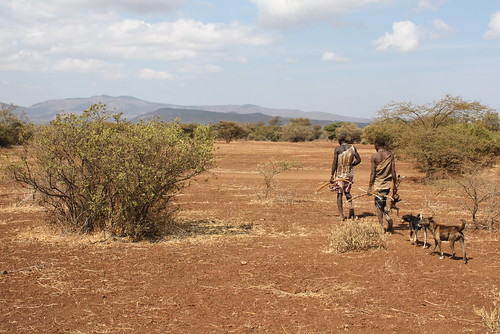 |
| Hadza returning from hunt in Tanzania. Credit Andy Lederer. |
On November 15th's episode of The Colbert Report, Stephen Colbert interviewed one of the world's foremost paleoanthropologists, Chris Stringer of the Natural History Museum, about his newly published book. During their conversation, Stringer sums up nicely why meat eating may have been the primary force that drove evolution of a brain-gut tradeoff, where a shrinking gut allowed for more energy input into the brain. Here is Stringer's explanation at about minute 18:30 in the episode:
Chris Stringer: "There's a thing called 'expensive tissue hypothesis'. And this says we evolved our large brains by changing our diets. Our ancestors had great big guts because they were vegetarian. They never had enough spare energy because their guts were using 20 percent of their energy; they never had enough spare energy to evolve a large brain. When we started eating meat, a much more concentrated sort of food, it freed up energy and we could start to run a bigger brain."
Stephen Colbert: "That's why vegetarianism seems so stupid to me."













